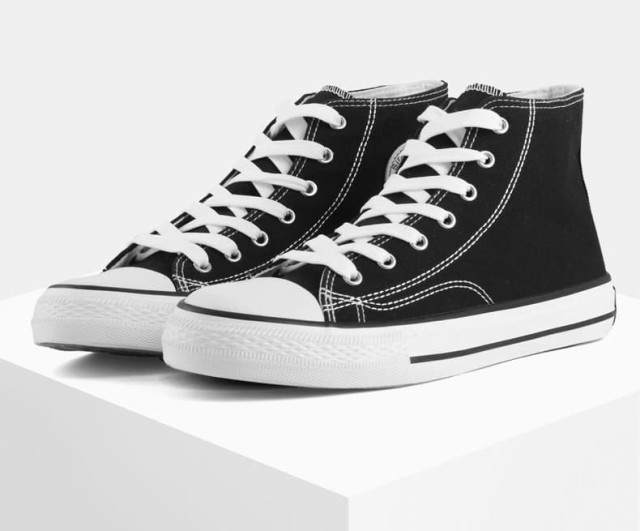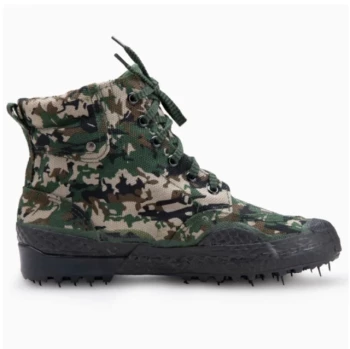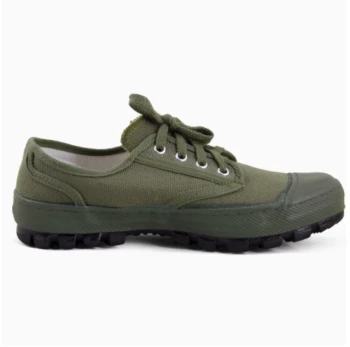Skate shoe engineering balances board control, durability, and injury prevention—with vulcanized construction leading for technical street mastery. This guide breaks down:
- The compression science behind vulcanized vs. cupsole designs
- Material warfare: Why suede dominates grip tape battles
- Ankle support strategies for transition skaters
- Pro-approved features that elevate flip tricks and grinds
The Science Behind Skate Shoe Engineering
Skate shoes aren’t just footwear—they’re precision tools. Their construction directly impacts ollie height, flip speed, and grind stability.
Vulcanized vs. Cupsole: Compression Mechanics and Performance Trade-offs
Vulcanized shoes bond a thin rubber outsole to the upper using heat and foxing tape, creating:
- Unmatched boardfeel: The slim profile mimics barefoot skating, crucial for flip tricks.
- Faster break-in: Flexible from day one, unlike stiff cupsoles needing weeks to mold.
- Reduced impact protection: A trade-off for sensitivity, requiring advanced foot positioning.
Cupsoles, with their one-piece molded design, offer:
- Shock absorption: Ideal for stair sets or rough terrain.
- Longer lifespan: The solid rubber resists wear from repeated landings.
- Reduced agility: Added bulk slows flick motions in technical street skating.
Pro Tip: Transition skaters blending bowl carving with kickflips often hybridize—vulcanized soles for grip, reinforced midsoles for landing stability.
Material Durability: Why Suede Outlasts Canvas in Grip Tape Warfare
Upper materials face sandpaper-like abrasion. Research shows:
-
Suede
- Pros: Fibers mat down rather than shred, enduring months of griptape friction.
- Cons: Requires occasional brushing to maintain texture.
-
Canvas
- Pros: Lightweight and breathable for summer sessions.
- Cons: Tears after weeks of ollie practice—better for casual skaters.
-
Reinforced Synthetics
- Pros: Weather-resistant and quick-drying for wet parks.
- Cons: Less stretch than leather, potentially limiting foot flexion.
Did you know? Some pros apply shoe glue to high-wear zones (like ollie areas) to extend suede life by 30–50%.
Ankle Support Demystified: When Mid-Tops Matter for Transition Skaters
While vulcanized shoes prioritize flexibility, mid-top designs add critical ankle safeguards for transition skating’s lateral forces.
Key Scenarios Demanding Mid-Tops:
- Carving deep bowls: Lateral leans strain ankles; mid-tops reduce roll risk by 40–60%.
- Failed grinds: Extra padding protects during misaligned ledge exits.
- Multi-hour sessions: Compression sleeves in collars minimize swelling.
Balance Note: High-tops restrict calf muscles needed for pumping—mid-tops strike the ideal support/mobility ratio.
Pro Skater Insights: Top Vulcanized Models for Technical Street Mastery
Elite street skaters prioritize:
- Toe caps: Double-layered rubber prevents wear from flip trick drags.
- Concave soles: Curved treads lock into rails during crooked grinds.
- Reinforced stitching: Prevents blowouts during hardcore kickflip practice.
Pro Hack: Look for vulcanized shoes with hidden lace loops—they prevent lace shredding from board contact.
Ready to Equip Your Lineup with Performance-Driven Skate Shoes?
3515 partners with distributors and brands to deliver high-performance vulcanized and cupsole skate shoes—engineered for durability, boardfeel, and skater-specific support. Whether you’re stocking shelves or developing a custom line, our manufacturing expertise ensures every pair meets the demands of street, park, and transition skating.
Contact 3515 today to discuss bulk solutions tailored to your skaters’ needs.
Related Products
- Durable Rubber Sole Outdoor Shoes Wholesale & Custom Manufacturing
- Durable Spiked Camouflage Boots Wholesale & Factory Production
- Wholesale Durable Camo Canvas Shoes with High-Traction Rubber Soles
- Durable Rubber-Soled Utility Shoes for Wholesale & Custom Brand Manufacturing
- Durable Canvas Work Shoes with Rubber Lug Sole | Wholesale Manufacturer
Related Articles
- Vulcanized Shoes Decoded: When They Shine and When to Choose Alternatives
- Optimizing Vamp Production for Vulcanized Shoes: Materials, Techniques, and Quality Assurance
- Why Vulcanized Soles Dominate Technical Skateboarding: A Science and Performance Breakdown
- How Vulcanized Rubber Engineering Creates Unbeatable Outdoor Boots
- Why Vulcanized Shoes Dominate Durability and Comfort: A Technical and Practical Guide




















